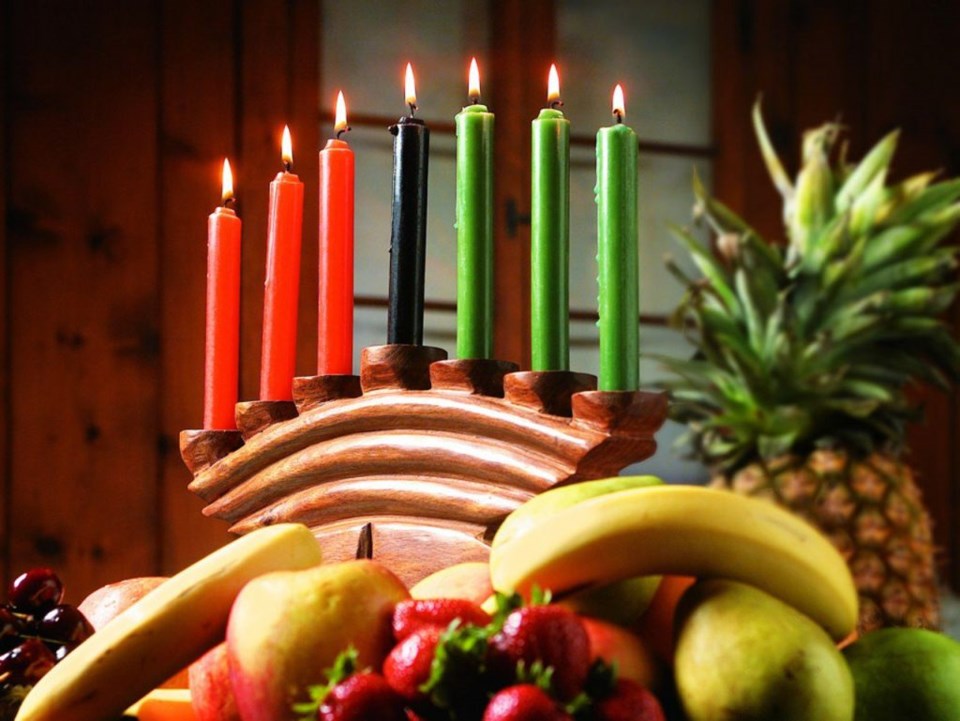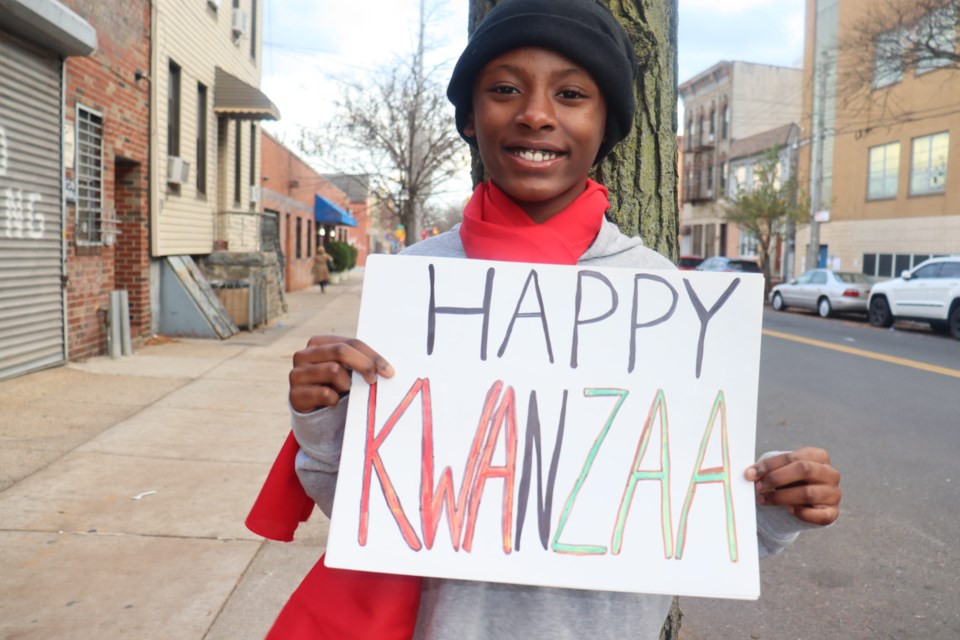Kwanzaa is a Kiswahili word that means “first fruits.”
The seven-day festival was founded in 1966 by Dr. Maulana Karenga as a way for African Americans to celebrate through the holidays using community building practices shared across the continent of Africa.
In fact, Kwanzaa has similarities with the Yam Festival in Ghana and Nigeria.
Five common sets of values are central to the activities of the week: assembly, reverence, commemoration, recommitment and celebration. Seven principles (the nguzo saba), that represent the cornerstone of Kwanzaa, are celebrated across each of the seven days following Christmas, beginning on December 26:
The Seven Principles
December 26: Unity (umoja)
December 27: Self-determination (kujichagulia)
December 28: Collective Work and Responsibility (ujima)
December 29: Cooperative economics (ujamaa)
December 30: Purpose (nia)
December 31: Creativity (kuumba)
January 1: Faith (imani).
The Symbols of Kwanzaa
Similar to the Jewish practices within Hanukkah, candles are used to represent concepts of the holiday and during the Kwanzaa ceremony, there are seven symbols displayed that represent the seven principles.
The symbols of Kwanzaa include crops (mzao) which represents the historical roots of African-Americans in agriculture and also the reward for collective labor. The mat (mkeka) lays the foundation for self- actualization

The candle holder (kinara) reminds believers in the ancestral origins in one of 55 African countries; they also hold the seven candles (mishumaa saba) that are lit each day of Kwanzaa.
Corn/maize (muhindi) signifies children and the hope associated in the younger generation. Gifts (Zawadi) represent commitments by the parents to provide them with tools for life. The unity cup (Kkimbe cha Umoja) is used to pour libations to the ancestors.
And on December 31, participants celebrate with a banquet of food (karamu) which often entails cuisine from various African countries. Gifts are also exchanged.
The Greeting
During Kwanzaa, participants greet one another with “Habari gani” which is Kiswahili for “How are you today?” The response is the principle for that day, followed by “habari gani.” For example: “Umoja, habari gani.”
Check back in with us at BK Reader, as beginning on December 26, and for the next seven days of Kwanzaa, we will feature a different local resident or organization that exemplifies one of each of the seven principles!




